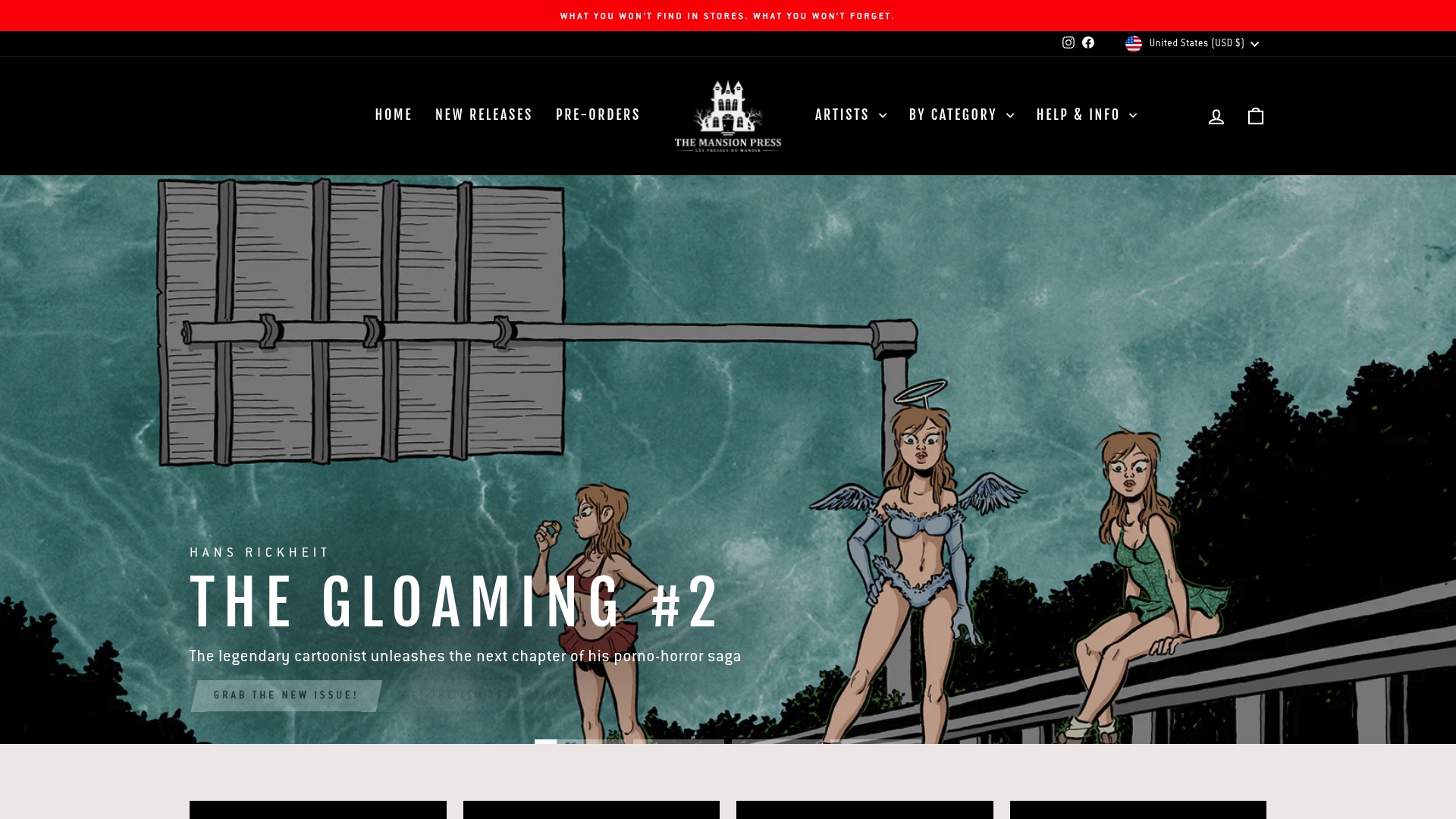Understanding Artbook Collecting Basics for Enthusiasts
Artbook collecting has quietly grown into a passionate pursuit for both seasoned art lovers and curious newcomers. Some rare artbooks have sold for over $100,000 at auction, which might sound unreal for something that just sits on a shelf. Yet collectors say these volumes offer more than ownership—they unlock forgotten eras, preserve visual stories, and connect you to a global community of creative minds in a way the average painting or digital file never could.
Table of Contents
- What Is Artbook Collecting And Its Significance?
- The Evolution Of Artbooks And Collecting Trends
- Key Concepts In Artbook Collecting And Value Assessment
- Building A Meaningful Artbook Collection: Considerations
- The Role Of Communities In Artbook Collecting
Quick Summary
| Takeaway | Explanation |
|---|---|
| Artbook collecting preserves cultural narratives | Collectors actively seek to document unique artistic expressions and support the creative industry through their acquisitions. |
| Evaluate artbook value beyond price | Factors like rarity, historical significance, and condition greatly influence an artbook’s true worth within the collector community. |
| Develop a focused collection strategy | Successful collectors define themes or movements that resonate personally, guiding their acquisitions and enhancing the depth of their collections. |
| Engage with communities for knowledge sharing | Collaborative networks provide opportunities to exchange insights, validate collection strategies, and discover rare publications through mutual support. |
| Understand preservation techniques for longevity | Proper storage and handling help maintain the condition of artbooks, preserving their artistic and monetary value over time. |
What is Artbook Collecting and Its Significance?
Artbook collecting represents a nuanced cultural practice of acquiring, preserving, and appreciating specialized publications that showcase artistic works across various genres and styles. At its core, this practice goes far beyond mere book ownership, serving as a critical method of documenting and celebrating visual creativity.
The Essence of Artbook Collecting
Artbook collecting involves systematically acquiring publications that compile artwork from individual artists, movements, or specific creative periods. Research from Christie’s highlights that these collections are not just passive accumulations but active preservation of cultural narratives. Collectors seek out volumes that provide deep insights into artistic processes, historical contexts, and visual storytelling.
Key characteristics of artbook collecting include:
- Documenting unique artistic expressions
- Preserving visual historical records
- Supporting artists and creative industries
- Building personal or institutional archives of visual knowledge
Cultural and Personal Significance
Collecting artbooks transcends traditional book collecting by emphasizing visual documentation and artistic appreciation. Museum collections research demonstrates that these publications serve multiple purposes beyond aesthetic enjoyment:
- Academic research and scholarship
- Historical documentation of artistic movements
- Archival preservation of creative expressions
- Personal inspiration and creative exploration
For enthusiasts interested in diving deeper into this fascinating practice, read more about understanding artbook fundamentals.
Professional collectors and casual art lovers alike recognize that artbook collecting represents a sophisticated intersection of cultural preservation, personal passion, and artistic appreciation.
Each acquired volume becomes a tangible connection to creative expressions that might otherwise remain unseen or forgotten.
The Evolution of Artbooks and Collecting Trends
The landscape of artbook collecting has undergone significant transformations, reflecting broader shifts in artistic production, digital technology, and global creative networks. Understanding these changes provides crucial context for contemporary collectors and art enthusiasts.
Historical Progression of Artbook Publishing
Traditionally, artbooks were expensive, limited edition publications primarily accessible to academic institutions and wealthy collectors. Contemporary art research from ArtNews reveals that digital platforms have democratized artbook creation and distribution, enabling independent artists to reach global audiences without traditional publishing barriers.
Key milestones in artbook evolution include:
- Transition from exclusively print to digital and hybrid publishing models
- Increased accessibility through online marketplaces
- Growing representation of diverse artistic voices
- Emergence of niche and specialized artbook genres
Contemporary Collecting Dynamics
Modern artbook collecting transcends traditional boundaries, integrating digital technologies and expanding collector demographics. Younger generations approach collecting with different motivations, valuing:
- Unique artistic expressions
- Limited edition and independent publications
- Digital and physical hybrid formats
- Global artistic perspectives
Learn more about building a comprehensive artbook collection to understand strategic approaches for modern collectors.
The evolution of artbook collecting represents a dynamic intersection of technological innovation, artistic expression, and cultural preservation. As digital platforms continue transforming creative landscapes, artbook collecting remains a vibrant and continually adapting practice that celebrates visual storytelling and artistic diversity.
Key Concepts in Artbook Collecting and Value Assessment
Artbook collecting involves more than simply acquiring books. It requires understanding complex valuation methods, rarity assessment, and preservation techniques that transform book acquisition into a sophisticated form of cultural investment.
Understanding Artbook Valuation
The value of an artbook extends far beyond its original purchase price. Rare book market research indicates multiple factors contribute to an artbook’s worth. Professional collectors evaluate publications through nuanced lenses that consider artistic significance, print quality, historical context, and scarcity.
To clarify the factors that influence the value of artbooks, the table below summarizes the key criteria collectors use when evaluating potential additions to their collections.
| Value Factor | Explanation |
|---|---|
| Rarity | The scarcity of copies printed or available for acquisition. |
| Artist/Publisher Reputation | Established or renowned creators and publishers increase value. |
| Historical/Cultural Significance | Importance to a movement, era, or major artistic development. |
| Physical Condition | Preservation state, absence of damage, and overall book care. |
| Limited/Special Editions | Unique characteristics such as signed copies or deluxe formats. |
| Print Quality | The reproduction standard and craftsmanship of the publication. |
| Contextual Relevance | The book’s place within an artistic trend or collector’s focus. |
Critical factors influencing artbook value include:

- Limited print runs
- Artist or publisher reputation
- Historical or cultural significance
- Physical condition and preservation state
- Unique or special edition characteristics
Preservation and Condition Assessment
Maintaining an artbook’s condition is paramount to preserving its monetary and artistic value. Collectors must understand how environmental factors and handling techniques impact long term book integrity. Archival quality preservation involves controlling:
- Temperature and humidity levels
- Light exposure
- Storage methods
- Handling protocols
Discover expert strategies for finding rare artbooks that can enhance your collection’s unique character and potential value.
Successful artbook collecting requires a blend of passion, knowledge, and strategic approach. By understanding these fundamental valuation concepts, collectors transform book acquisition from a hobby into a sophisticated form of cultural preservation and potential investment.
Building a Meaningful Artbook Collection: Considerations
Building a meaningful artbook collection transcends random acquisitions. It requires intentional strategy, personal passion, and a nuanced understanding of artistic narratives and individual collecting goals.
Developing a Focused Collection Strategy
Collectors research from Christie’s emphasizes the importance of developing a coherent collection philosophy. Successful collectors approach their libraries with clear intentionality, focusing on specific themes or artistic movements that resonate personally.
Key strategic considerations include:

- Identifying personal artistic interests
- Establishing clear collection boundaries
- Creating a long term acquisition plan
- Balancing diversity and specialization
- Setting realistic budget parameters
Personal Passion and Curatorial Vision
A meaningful collection reflects the collector’s unique perspective and intellectual curiosity. This means moving beyond aesthetic appreciation to understanding deeper artistic contexts, historical significance, and personal connection to the works.
Important elements of developing a curatorial vision involve:
- Researching artistic movements
- Understanding cultural and historical contexts
- Developing critical visual analysis skills
- Cultivating relationships with artists and publishers
Explore creative approaches to artbook publishing to gain deeper insights into the artistic creation process.
Ultimately, building an artbook collection is a deeply personal journey of artistic discovery. It represents an ongoing dialogue between collector, artist, and the broader cultural landscape, transforming book collecting from a passive activity into an active form of cultural engagement and preservation.
The Role of Communities in Artbook Collecting
Artbook collecting transcends individual pursuits, evolving into a rich collaborative ecosystem where knowledge, passion, and shared experiences create powerful networks of connection and understanding. Communities play a transformative role in shaping collector experiences and expanding collective artistic awareness.
Knowledge Sharing and Collaborative Learning
Art book community research demonstrates that collector communities function as dynamic platforms for expertise exchange. These networks provide crucial opportunities for members to share insights, verify authentications, discover rare publications, and develop sophisticated understanding of artistic movements and publishing trends.
Key benefits of community engagement include:
- Access to specialized knowledge
- Peer validation of collection strategies
- Opportunities for trading and acquiring rare volumes
- Mutual support in preservation techniques
- Collective historical documentation efforts
Digital and Physical Community Platforms
Modern artbook collecting communities operate across diverse platforms, blending traditional in person interactions with sophisticated digital networking. Collectors connect through specialized forums, social media groups, academic conferences, and dedicated online marketplaces that facilitate global interactions.
For readers considering how to interact with artbook collecting communities, the table below highlights primary types of engagement platforms and their characteristic benefits.
| Community Platform | Description | Key Benefits |
|---|---|---|
| Online Discussion Forums | Topic-focused web forums for collectors | Knowledge sharing, global access |
| Book Fair Events (Virtual/Live) | Organized gatherings for collectors and sellers | Networking, rare finds, workshops |
| Academic/Collector Symposiums | Scholarly or specialist conference events | Research access, expert discussions |
| Social Media Groups | Interactive communities on social platforms | Quick updates, peer validation |
| Collaborative Research Projects | Joint documentation and cataloging efforts | Collective discovery, historical archiving |
Community engagement strategies encompass:
- Online discussion forums
- Virtual and physical book fair events
- Academic and collector symposiums
- Social media interest groups
- Collaborative research initiatives
Learn more about building connections in the artbook collecting world to understand how networking enriches your collecting journey.
Ultimately, artbook collecting communities represent more than information exchange networks. They are living, breathing ecosystems of cultural preservation, artistic appreciation, and collective knowledge generation that transform individual passion into shared intellectual adventure.
Ready to Start or Elevate Your Artbook Collection?
You have just explored the fundamentals of artbook collecting and learned how intentional curation and authentic passion set apart truly meaningful collections. If you have ever felt frustrated by the challenge of finding unique volumes, limited editions, or discovering independent artists that fit your vision, you are not alone. Many collectors struggle to bridge the gap between what inspires them and what is available in traditional retail stores. At The Mansion Press, every page is carefully selected to help you overcome these barriers, giving you direct access to exclusive artbooks, rare comics, and original works often unavailable anywhere else.

Do not let your next opportunity slip by. Visit The Mansion Press to browse the latest independent releases, secure a coveted collector’s edition with our pre-order options, or search our curated catalog for the missing piece in your growing archive. Start building the artbook collection you have always imagined and connect directly with artistic communities who share your passion. Experience the difference today at The Mansion Press online store.
Frequently Asked Questions
What are the key factors to consider when assessing the value of an artbook?
The value of an artbook is influenced by factors such as its rarity, the reputation of the artist or publisher, and its physical condition. To assess value, examine these elements closely and consider how they reflect artistic significance and historical context.
How can I develop a focused collection strategy for artbooks?
To develop a focused collection strategy, start by identifying your personal artistic interests and establishing clear collection boundaries. Create a long-term acquisition plan that balances diversity with specialization, ensuring your collection reflects your unique vision.
What preservation techniques are essential for maintaining artbook quality?
Essential preservation techniques include controlling temperature and humidity levels, managing light exposure, and using proper storage methods. Begin by implementing these practices immediately to extend the lifespan and maintain the condition of your artbooks.
How can I effectively engage with artbook collecting communities?
To engage with artbook collecting communities, join online forums, attend virtual or physical book fairs, and participate in social media groups focused on artbooks. Start making connections with fellow enthusiasts to share insights and expand your knowledge base.
What research should I conduct before purchasing an artbook?
Before purchasing an artbook, research the artist and the context surrounding the work, including its significance within an artistic movement. Take time to evaluate the publication’s print quality and historical relevance to ensure it aligns with your collection goals.
How can I identify unique artistic expressions when building my collection?
To identify unique artistic expressions, study various art movements and delve into the contexts of individual artists’ work. Attend exhibitions and read scholarly articles to gain insight, then look for artbooks that embody these distinctive qualities to enrich your collection.
Recommended
- Mastering Building an Artbook Collection: A Practical Guide – The Mansion Press
- What Defines an Artbook? Understanding the Essentials – The Mansion Press
- Expert Tips for Finding Out-of-Print Artbooks Anywhere – The Mansion Press
- Understanding Graphic Novels versus Artbooks Explained – The Mansion Press
- How to Buy Original Art: A Collector’s Guide - Art-Online

